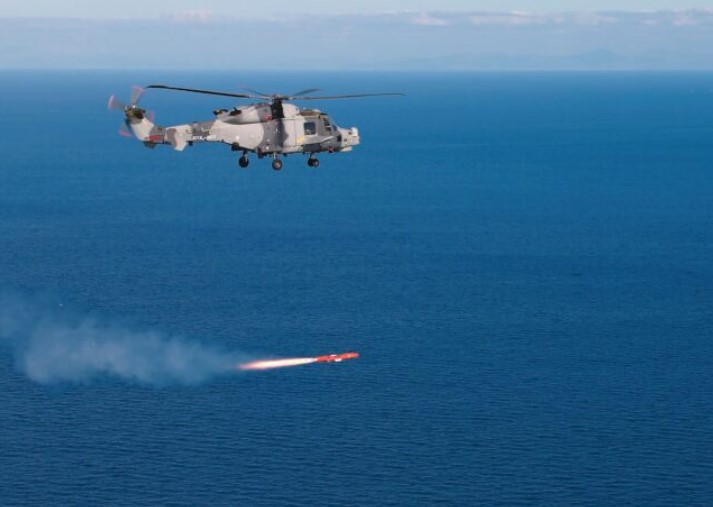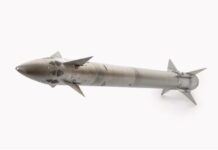A Sea Venom medium-range anti-ship missile has successfully completed the weapon’s first guided live firing from a Royal Navy Leonardo Wildcat helicopter at the UK Ministry of Defence (MoD) Aberporth range in Wales, the MoD’s Defence Equipment & Support (DE&S) organisation reported on 9 October 2024.
The guided firing marks a significant milestone in the integration of Sea Venom onto the Wildcat helicopter to provide it with an offensive capability against targets up to corvette size, supporting the Royal Navy’s Carrier Strike Group deployment in 2025 and beyond. A collaborative effort by MoD and industry teams, the live-fire trial consisted of a single firing against a single target.
Developed by MBDA for both the Royal Navy and the French Navy under the Future Anti Surface Guided Weapon – Heavy)/Anti Navire Léger (FASGW(H)/ANL) programme, the Sea Venom missile has been designed for use in demanding maritime operations under complex rules of engagement where it might need to target hostile threats among non-combatants in congested littoral environments. According to MBDA, it features state-of-the-art uncooled imaging infra-red seeker technology with advanced algorithms to accurately select the correct target in dense shipping scenarios and a robust two-way datalink to allow ‘man-above-the-loop’ supervision of the engagement from the cockpit.
The Sea Venom, which has a high subsonic speed and a range in excess of 20 km, offers a variety of different flight profiles – including sea skimming – and is armed with a 30 kg class warhead. The missile is able to select a very precise aimpoint to provide the operator with a full range of non-lethal as well as lethal options, such as disabling main armaments, sensors or propulsion and steering equipment.
Pete Fawcett, the Senior Responsible Owner for the Sea Venom programme, was quoted as saying by DE&S, “This first guided firing is a significant step forward for the integration of Sea Venom onto the Royal Navy’s Wildcat helicopters. The success of the trial was the result of an outstanding team effort across Leonardo Helicopters, MBDA, QinetiQ and the Ministry of Defence.”
Commodore Naval Aviation Stuart Finn, the head of the Fleet Air Arm, added, “This successful firing demonstrates the continued development of the Fleet Air Arm’s and Royal Navy’s world-class warfighting capabilities and asserts the Wildcat as the world’s leading maritime strike helicopter, capable of intercepting enemy ships at a time and place of the UK’s choosing. This capability further increases the already-potent warfighting effect delivered by the UK’s Carrier Strike Group. This is another successful collaboration between MoD and industrial partners.”
The Royal Navy introduced Wildcat helicopters into service in 2015. Along with the Martlet/Lightweight Multirole Missile (LMM) developed under the FASGW – Light programme, the Sea Venom missile ensures the Wildcat helicopter can provide a formidable capability against a range of targets at sea and in the littoral environment.












